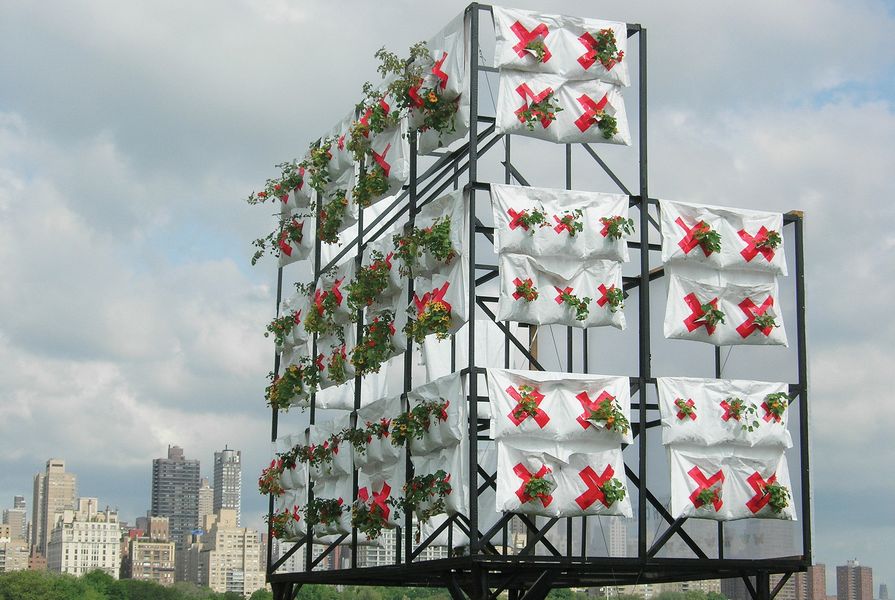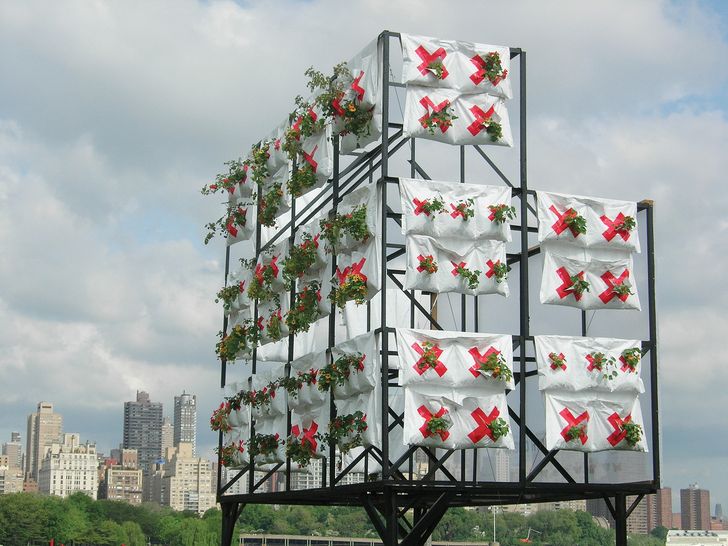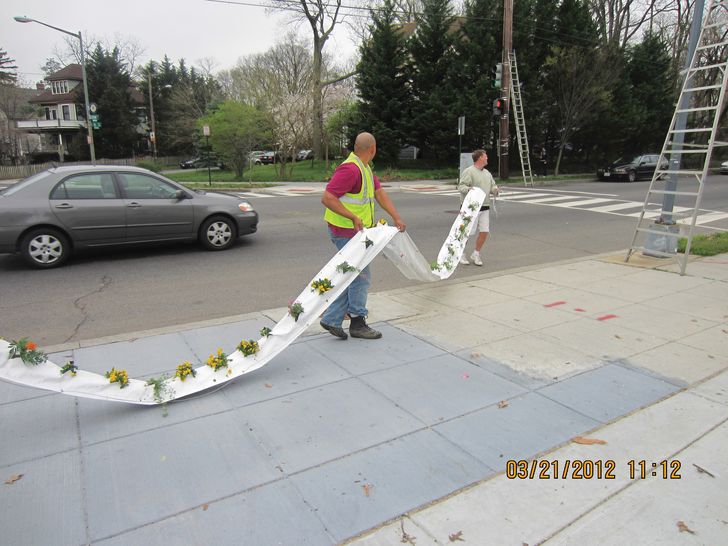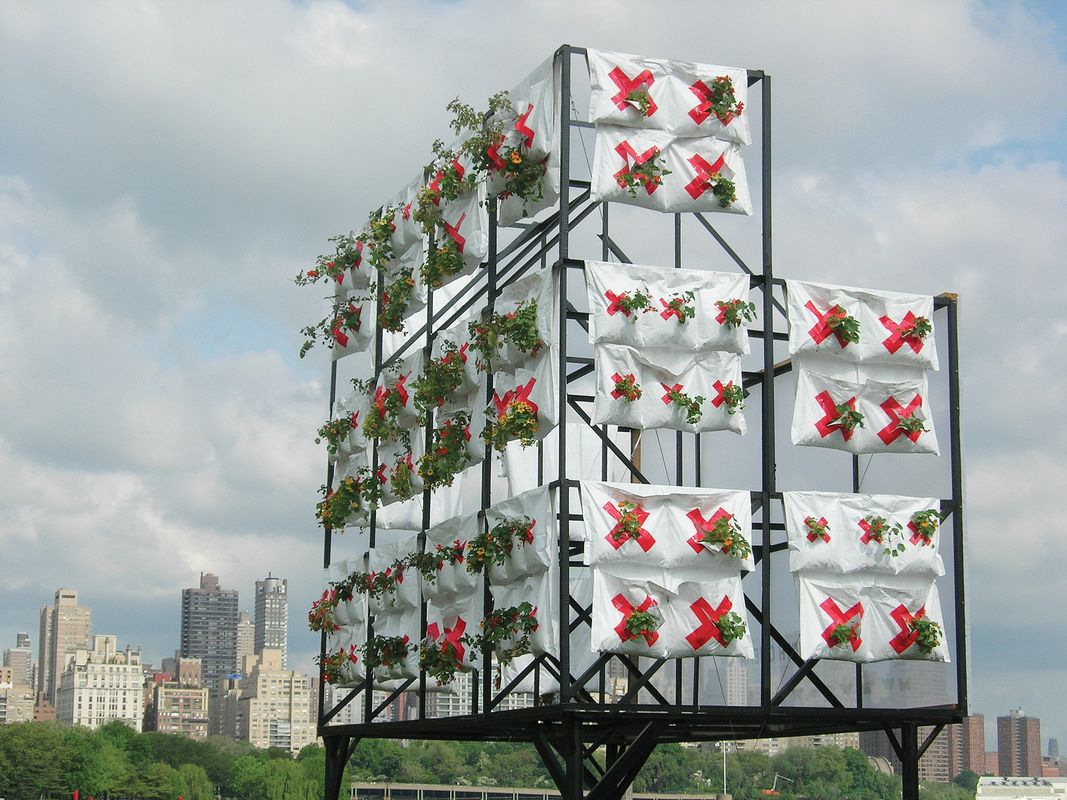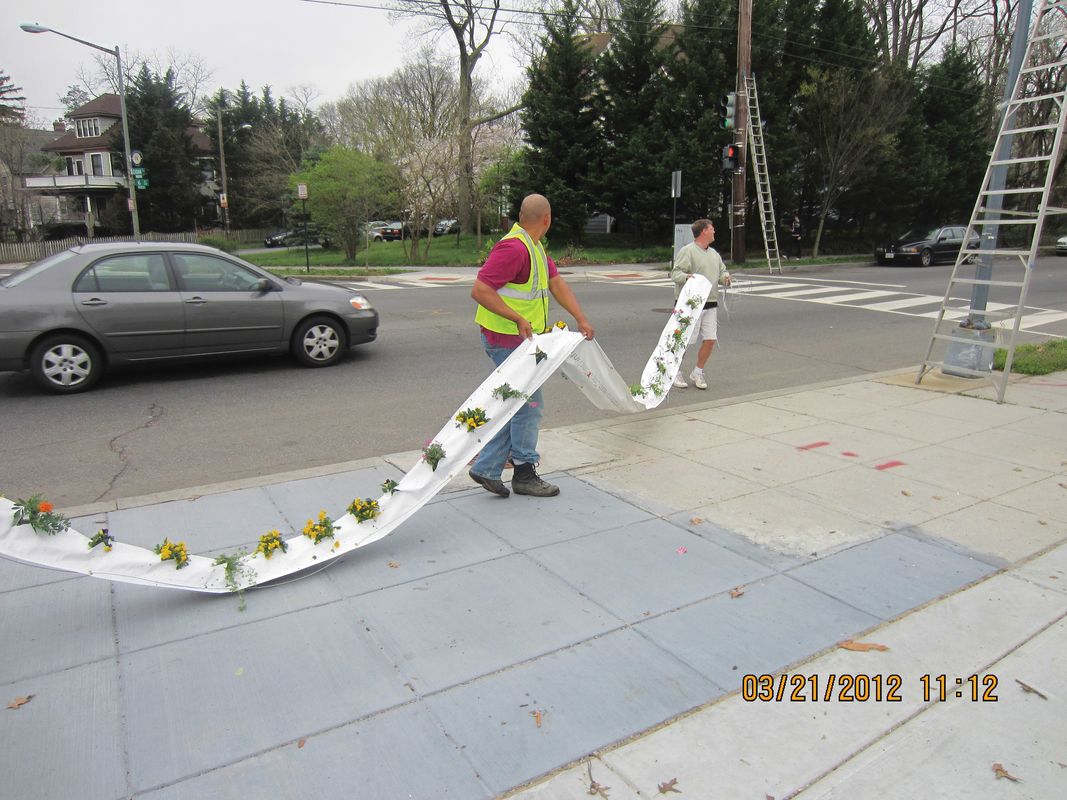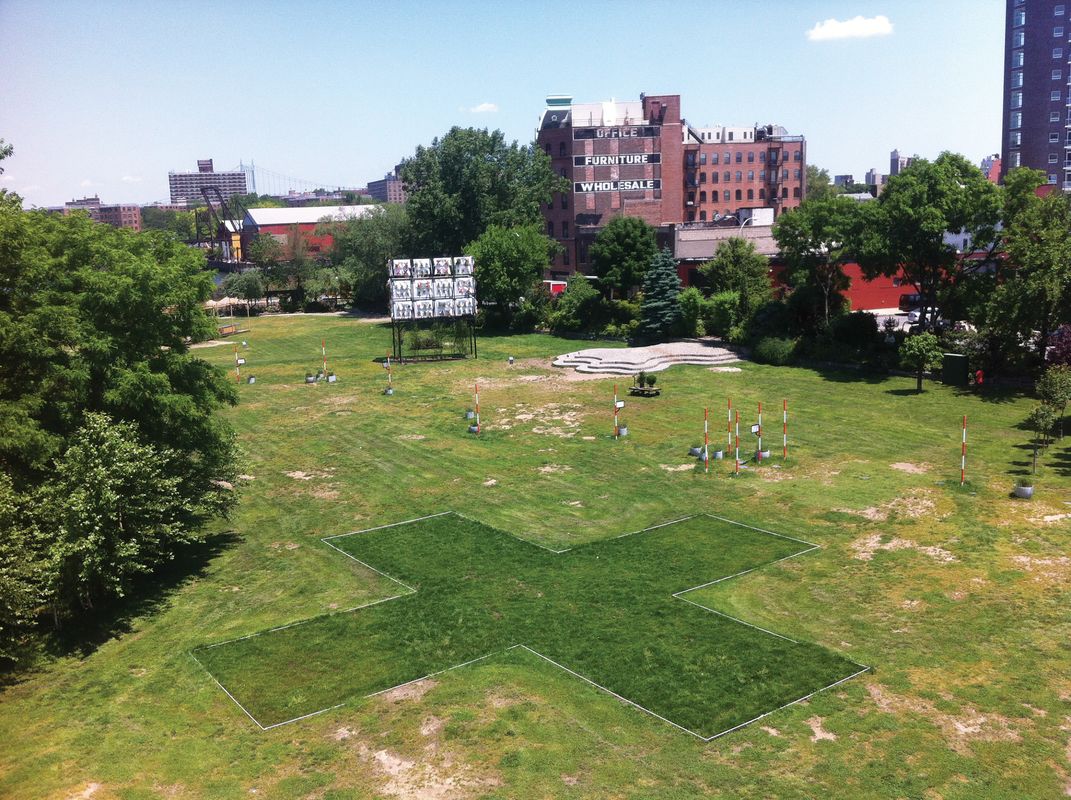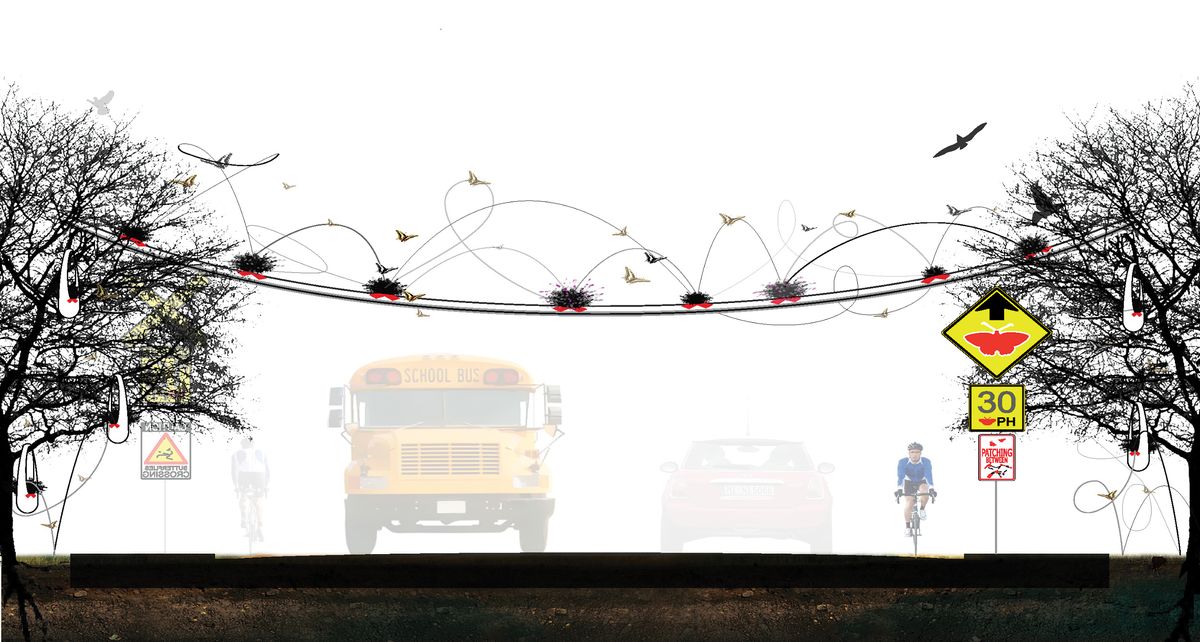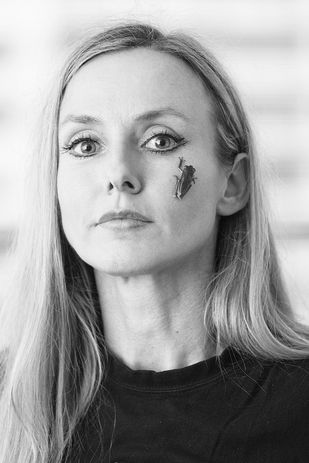
Natalie Jeremijenko.
Claire Martin: Sociologist Saskia Sassen describes the city as a place where “those who lack power… [are] able to make a history, a politics, even if they do not get empowered.” Can you expand on what you frequently describe as the “crisis of agency”? Do you see this as a peculiarly urban condition?
Natalie Jeremijenko: The idea of a crisis of agency is an idea that we can all identify as a total powerlessness, no matter what our expertise, no matter what fancy landscape architecture firm we work in, no matter what big university we’re affiliated with. [It’s] the idea of climate destabilization, the condition of the Anthropocene, where we think about these biogeochemical processes that we’re told we’re responsible for, that we are driving, but we’re driving with our eyes closed. The idea that there are these anonymous forces over which we feel so little agency, so little capacity to change, or in any way act in accordance with our own concerns. It’s a kind of “response-ability” and lack of agency that we feel. Signing petitions, changing a light bulb and taking the bike lane, are necessary but not sufficient. What’s interesting about the crisis of agency is that it’s not a class issue at all, [and] I don’t think it’s a particularly urban issue. It is that sense of what to do and leveraging the capacity to do.
But where do we get that capacity, where is the invitation? The opposite to the crisis of agency is an invitation to radically redesign our relationship to natural systems as a shared cultural challenge in which we feel the excitement, the wonder and the invitation. Welcome to the Anthropocene – now you can take responsibility, now you can respond. I think very few of us feel invited to [act]. It’s not just an invitation to reimagine but to take those imaginings and design them now, here in your local neighbourhood, in your urban environment. That’s where it’s radically different, that’s where it’s a break from received environmentalism.
CM: Can you talk more about the spectacle of your work? The desire to create “wondrous engagement” through shared public memories of a possible future?
NJ: Wonder is my favourite human emotion – it was Rachel Carson’s thesis [subject] and primary strategy. I think we should credit her with inspiring a movement that really privileged wonder as a powerful social organizing and particularizing [tool]. It’s something that’s very personal; it’s being human, mesmerized by the extraordinary specificity and precision of how natural systems work.
The xClinic’s Farmacy is a distributed urban farm designed to improve environmental health, augment biodiversity, and produce delicious edibles.
Image: xClinic
Wondrous engagement is a really powerful antidote for the depressing fear-mongering of globalized discourse in conventional environmental media, of global biodiversity loss and the accounting systems that can tell us about our carbon footprints … how much coal is transported through the Great Barrier Reef, how many forests we’re losing … all of these accounting methods work on a massive scale of representation, earnestly trying to represent the scale of the problem but in so doing completely paralysing each one of us to [act]. By definition we can do nothing about global biodiversity loss and the polar bears in the arctic. While there might be a great deal of empathy and engagement with them, there’s very little capacity to act on it while sitting in our office in Melbourne or here in New York.
So this is in opposition to Peter Singer’s position, [paraphrasing] that physical distance doesn’t excuse moral responsibility. And while that’s a nice idea, in practicality if you can’t figure out what agency you have then by definition you can’t do anything. Whereas [if] we can localize our environmental challenges [and understand] our relationships with natural systems through things that we can directly see, engage with, wonder about … then these simple wonderings about our immediate urban ecologies can equip us to do something, to design and adapt.
The idea of spectacle I think is really interesting. [For example] the strategies that I have used with respect to something like the Butterfly Bridge … by itself [it] does not provide as many pollinator resources as you might get on a green roof if it were optimized for biodiversity. But the value of the Butterfly Bridge is that it makes the presence of these fleeting pollinators more durable. To use a public health metaphor, it infects a lot of eyeballs. You can walk past a green roof or a solar array and not know it’s there, whereas these public experiments act as signals. Visibility, I think, does a lot of work to enlist the popular imagination and to provide fascination.
At the other end of the scale is the Toronto Flight Path project that I did with Usman Haque, where we flew hundreds of people across Nathan Phillips Square past downtown and City Hall. That visceral engagement, the spectacle of people flying on sixteen-foot biomimetic wings, is in some senses a simple spectacle; like other zip-lines [it’s] a visceral thrill. But it’s about the direct experience, it’s not about just height and speed, it’s about the gentle phenomena of lift and the shape of the wing …
The xClinic’s Butterfly Bridge project – a suspended path planted with enticing flowers and plants – allows butterflies to navigate obstacles in urban settings.
Image: xClinic
So on a social [level], there’s this idea that we could entertain more radical transformations in our urban infrastructure, [that] we could explore fast, emission-less, radically inexpensive mobility and goods distribution; that we could look at alternatives. To be able to have that discussion about the feasibility of something that’s unfamiliar, like using zip-lines in an urban context, is so much more possible if someone’s had an experience of it. Seeing it implemented in this playful way allows people to imagine, then prototype in their own head what is possible. No number of beautiful Photoshop renderings can work in the same way.
CM: You describe your use of technology as being for the creation of opportunities for social and environmental change, and have said that “we are not passive victims, we get the technology we deserve.” Does this mean we are now getting the environments we deserve?
NJ: Let me give you an example of this idea. I have just signed on to be an adviser for a new lab that Buzz Feed is setting up. There’s a landscape-architecture-driven project that we’re just starting. You know the project OOZ (zoo backwards and without cages)? It’s about this idea that we can create organism-centric views of urban systems, which I think intellectually is an extraordinarily productive way to look at our urban systems and design opportunities for rethinking our shared infrastructure and how we design with living systems.
[ The] project is to create a luxury housing development for lobsters just off the shore of Mott Haven [New York City]. [We use] an adapted lobster pot, in which there is a camera and a trigger so we can see if the lobsters hanging out in there. Waste management is the big industry of the Bronx and the South Bronx so we take glass bottles and recycle them locally … to create the sandy bottom that lobsters like. It’s this idea of a wild pet, where we can supplement the nutritional resources available to the lobsters and try to make [the river] habitable for them so that they can play this important role of a non-human roving reporter. We named the [resident] lobster after the local community organizer Michael Johnson. For all the Environmental Protection Agency water-quality monitoring, [we now have] Michael Johnson the lobster tweeting about the water conditions and [whether the lobsters are] surviving or not, or thriving or not.
So the promise of the internet of things is not about some illusory promise of efficiency and tracking materials and making fully accounted systems with energy star ratings … it is about open questions such as “how do we design a healthy aquatic ecosystem and how is that related to what we do in a terrestrial context, and how much can we improve our local environmental health?” It’s the cultural challenge of a participatory process – the [challenge] of to what extent we use social media, sensor-driven technology and smart city opportunities, is ours to seize. Will we, or can we, seize it? … The real challenge is to bring it in to the cultural imagination and to the social infrastructure of those who feel responsible for designing our shared environmental commons.
So technology can never be thought of alone … we have to figure out powerful ways to investigate and represent these natural processes that we know are very hard to understand, and make them culturally vivid. [While] it’s a technological opportunity, the real demands are the cultural and social ones, the design question. Do we get the technology we deserve, [I don’t know], but we can have a lot of fun figuring out how best to deploy it. The opportunity of technology is to sustain our attention, to figure out ways to cut through the overwhelming complexity to something that is situated in a real community in a real context, to test concrete small-scale and ultimately designable ideas.
Natalie Jeremijenko will be a keynote speaker at This Public Life in Melbourne, 10–20 October 2015.
Source

Practice
Published online: 9 May 2016
Words:
Claire Martin
Images:
xClinic
Issue
Landscape Architecture Australia, May 2015

